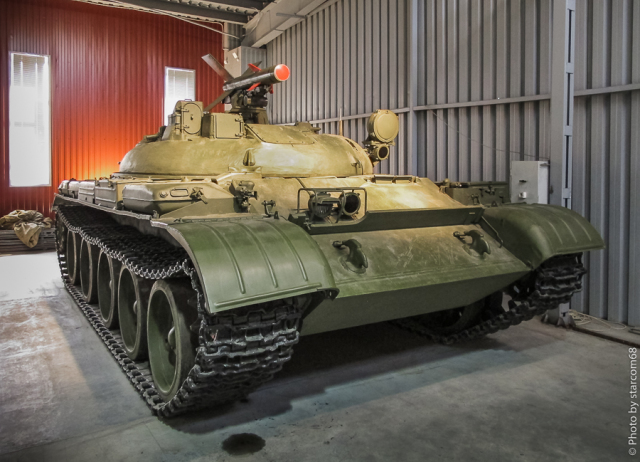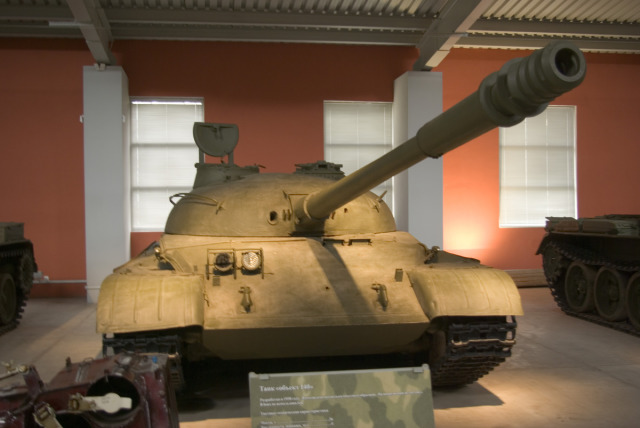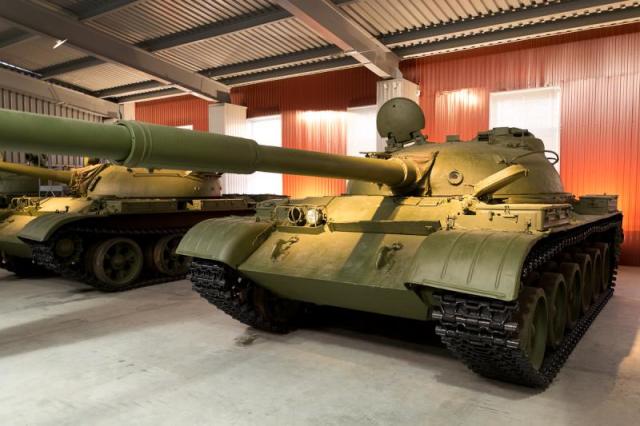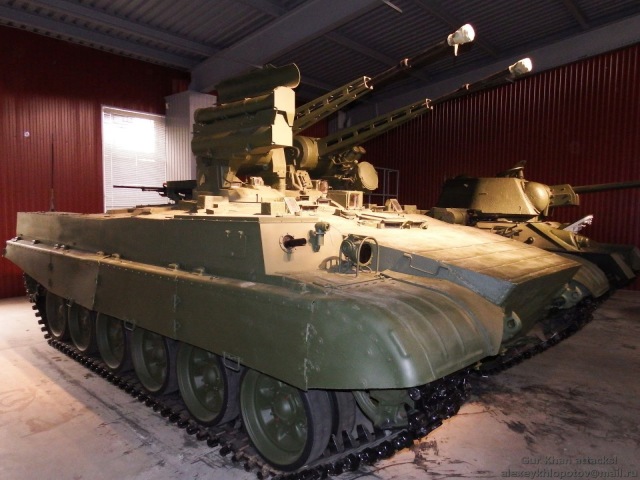In the technical and accounting documentation, these machines remained "objects" or "products", even though many of them had unique characteristics. In honor of the Tanker's Day, which is celebrated in Russia on September 11, we tell you about the most interesting non-serial developments that can be called a real exclusive in the world tank buildingUpgraded "thirty-four"
Modernization of the T-34, which later became the main Soviet tank of the Great Patriotic War, began in 1940. According to open sources, the reason for making changes to the design was a comparative test of the "thirty-four" with the German Panzer III, purchased in Germany after the signing of the non-aggression pact. As a result of a study conducted by Soviet engineers and tankers, it turned out that the German "troika" had a significant superiority in speed, armament and armor protection. In addition, more comfortable conditions for the crew were created inside the tank.
Based on the conclusions of the experts, it was decided to seriously and hastily modernize the "thirty-four". Work began in the winter of 1941 under the supervision of designer Alexander Morozov.
As a result, the Soviet car received a more powerful 600-horsepower engine (the conventional T-34 has 500 hp), the candle suspension was replaced with a more modern torsion bar, and a separate commander's turret was equipped on the main turret, which allowed expanding the interior space of the tank. Also, the updated machine had increased the ammunition of the gun from 77 to 100 shots, and the T-34 itself turned out to be almost a ton lighter than the previous version.
In June 1941, in accordance with the order of the People's Commissar of Medium engineering, the production of "thirty-fours" had to stop, T-34M tanks were introduced into the series instead. However, the war that began on June 22 interfered with the plans, and the order was canceled. After the evacuation of the plant deep into the country, the designers did not return to the T-34M tank anymore.
Fighter with a "Dragon"
"Object 150", IT-1, self-propelled anti—tank complex - all these are the names of the world's first and only missile tank destroyer. The designers of Uralvagonzavod, located in Nizhny Tagil, created this unique machine in the late 1950s on the basis of the serial T-62. The IT-1, according to the design documentation, was supposed to destroy the enemy's armored vehicles with the help of an anti-tank missile system (ATGM) installed on the tower, which later received the name "Dragon". He fired guided missiles capable of piercing 250-millimeter armor. The new machine could fire from the spot and in motion with a probability of hitting the target of about 90% at a distance of up to 3 km.
 |
| Self-propelled anti-tank complex IT-1. |
| Source: © Uralvagonzavod Press Service |
At the final stage of testing, the IT-1 hit three tank targets with missiles in a few minutes at once, and it was decided to establish mass production of new vehicles as soon as possible.
In the period from 1966 to 1970, 220 tank destroyers were manufactured. However, the IT-1 service turned out to be short—lived - in the mid-1970s, the car was decommissioned. However, the experience of its creation and operation helped to choose the right combination of classic cannon and guided missile weapons of a modern tank. Created in the 1970s and 1980s, Soviet main battle tanks received powerful smoothbore guns capable of firing both conventional armor-piercing and high-explosive shells and guided missiles launched through the barrel. Today, this principle is used both on the newest T-14 Armata and on the best Western tanks.
With the motor "on the side"
The competition of armor and projectile goes through the entire history of the world tank building. Due to the appearance of powerful guns and ammunition, tank designers increased the thickness of protection and designed armored hulls and turrets with the most advantageous anti-projectile shape. The highest achievement in this competition, a kind of ideal, was the tank "object 140" that appeared in Nizhny Tagil in the 1950s. Its creators, seeking to gain additional hundreds of kilograms of weight on the armor, for the first time used an aluminum alloy chassis. And the plant's engine was even put "on its side". This required a serious redesign of the engine compartment, crankshaft and mounting points of other components, but it allowed to reduce the height of the engine and transmission compartment. And most importantly, the developers have created a body of bent profiles of variable thickness, thereby ensuring maximum anti—discharge resistance in the most shelled areas.
 |
| Tank "Object 140". |
| Source: © Uralvagonzavod Press Service |
However, all the tricks turned out to be in vain: the cumulative ammunition of the new generation, which became mass in the same 1950s, easily penetrated the armor of the "one hundred and fortieth" - just like the serial T-54 or T-55. The lesson was learned: the protection of the next-generation T-64, T-72 and T-80 tanks was strengthened not due to the thickness and shape of steel structures, but through the use of multilayer barriers and active protection methods.
Tank with turbine
Throughout the twentieth century, designers were forced to increase the combat weight of tanks — to put more armor, new guns and instruments, increase ammunition, etc. And this means that more and more powerful engines were required, and preferably without increasing the weight and size of the engine and transmission compartment. In the 1950s, aviators suggested a promising direction: a gas turbine engine (GTD). By the end of the decade, the idea of equipping a GTD tank received support in the leadership of the armed forces.
The GTD was initially tested on the serial T-55, but it was clear that a car with a more advanced chassis was needed to realize the potential. Uralvagonzavod offered its prototype "object 167", work on which was previously discontinued in favor of the Kharkov tank "object 432" — the future T-64. This is how the "object 167T" appeared.
 |
| Tank "Object 167T". |
| Source: © Uralvagonzavod Press Service |
In general, according to Uralvagonzavod specialists, the idea did not justify itself — a special design gas turbine engine was required for the tank. However, the chassis of the "object 167" was tested in full. In a few years it will appear on the new Tagil T-72 tank.
Armored Tank Support Vehicle
In the early 1970s, the infantry of Western countries began to receive modern hand-held anti-tank grenade launchers (RPGs), which, according to military experts, posed a potential threat to Soviet tanks.
According to open sources, the response of the domestic defense industry was the creation of a highly protected combat vehicle, which on the battlefield was supposed to cover tanks from possible attacks by grenade launchers, calculations with anti-tank guided missiles (ATGM), infantry and armored vehicles of the enemy with the possibility of simultaneous suppression of several targets.
 |
| BMPT 781. |
| Source: © Uralvagonzavod Press Service |
The new vehicle, called the BMPT 781 (tank support combat vehicle), was built on the basis of the T-72 tank. The BMPT received independent combat modules with the possibility of replacing weapons with more modern ones, as well as automatic guns that were controlled remotely.
In 1989, the Chelyabinsk Tractor Plant produced four samples of the "object 781", but already in 1990, due to the collapse of the USSR and the beginning of the conversion of military production, work on the creation of BMPT was curtailed. Nevertheless, the ideas embedded in this machine continue to live today. Based on it, a modern Terminator BMPT has been created, which has successfully proven itself in combat conditions in Syria.
]Vasily Kuchushev
